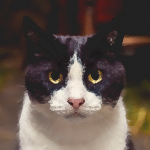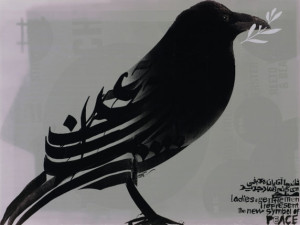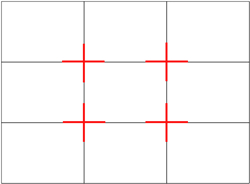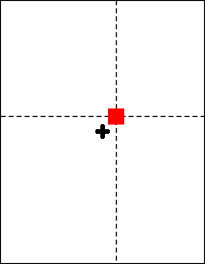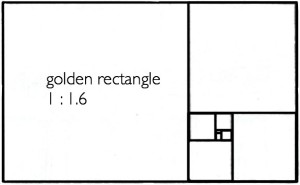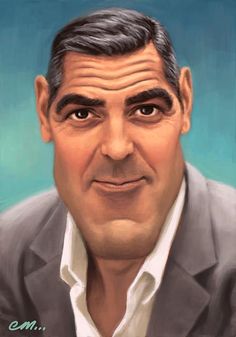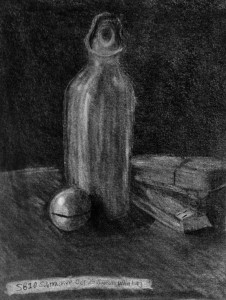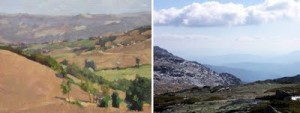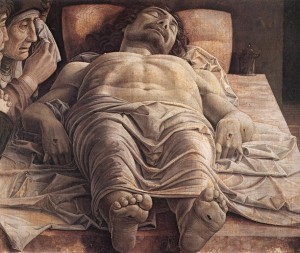4D Design
All of these elements/principles are taken from Elements and Principles of 4D Art and Design, by Ellen Mueller (Oxford University Press, 2016).
Presentation on 4D Components of an Artwork (Subject/Form/Content/Context), the Elements of 4D Design (Prezi), the Principles of 4D Design (Prezi)
| Elements of Four-Dimensional Work | |
| Time | The progression of events and existence from the past, through the present, and into the future. Categories of time include measured, experienced, edited, running, biological, linear, non-linear, and digital among others. |
| Architecture / Topography | Architecture consists of buildings or structures. Topography consists of the relief features or surface configuration of an area. |
| Shape | The outline of a form. Shape in 4D works is most common in relationship to architecture, topography, light, and movement. Shape can be organic (rounded or soft), geometric (linear/ angular), or a combination. |
| Space | A continuous area or expanse within which a work can take place. 4D space can be digital (screen-based) or analog (in relationship to architecture or topography). Positive space is a form, or area of focus, within a larger environment. Negative space is the area surrounding the form or area of focus. |
| Color | Human perception of different wavelengths of visible light; Component parts include hue (the name of the color; example: blue), saturation (purity or intensity of the color), value (relative lightness or darkness of the color). Light can also have different colors or temperatures (cool versus warm). |
| Light | A form of radiant energy that reflects off the world around us and into our eyes, allowing us to see our environment and color. Light sources can be ambient (circumstantial daylight), or specific/task oriented (spotlights, accent lights, key/back/fill lights). Light can also be reflected or diffused to control brightness. Shadows, projections, and silhouettes also utilize light. |
| Movement | A shift or variation in the location of an object, light, or sound. Stillness is movement’s opposite. Gestures or isolations are movements by a part of a whole. |
| Sound | Vibration that can be perceived by the ear. Its opposite is silence. Sound has three basic parts: an attack (onset, growth, birth), sustain (steady-state, duration, life), and decay (fall-off, termination, death). |
| Principles of Four-Dimensional Work | |
| Value / Brightness | The relative lightness or darkness of an area as caused by a light source. Low-key environments with little light have a different sense of brightness than high-key environments with a great deal of existing light. |
| Balance | Balance is the equalizing of the visual weight of elements, and is often referenced in relationship to movement, sound, light, architecture, topography, space, and time. There are three types of balance: symmetrical (one half mirrors the other), asymmetrical (dissimilar items balance each other out), and radial (elements are spread out circularly from a central point) |
| Contrast / Variety | Contrast is the relative difference between two or more elements or stimuli. Variety is the relative diversity and change throughout a piece. |
| Direction / Reflection | The course along which light, sound, or movement moves. For example, light has specific names for directional lighting, such as side-light, back-light, down-light, and up-light. |
| Repetition / Rhythm | Repetition is a repeating visual element (line, shape, pattern, texture, movement), and rhythm is its flowing and regular occurrence. Looping is a specific type of continuous repetition in time based work. |
| Scale / Proportion | Scale is the overall size of something. Proportion is the relative size of objects within a work. For example, a caricature exaggerates the proportion of one or more facial features, while installations in sculpture gardens often have a very large scale. |
| Causality | Everything has a cause and effect. This principle is especially important in narrative works. |
| Duration | The length of time something continues or exists. |
| Energy Dynamics / Intensity | The amount and type of energy felt by the viewer or participant at any given moment. |
| Interactivity | The exchange of information between two or more entities; influencing or having an effect on each other. There are several categories of interactivity, such as cognitive, social, contextual, participant-centered, creator-centered, activity-centered, and system-centered. |
| Musicality | The characteristic parts or principles of music and sound. Every sound has pitch (the frequency of a sound vibration), tone (the quality of a sound vibration), and amplitude (loudness, volume in decibels). Musical sounds also have timbre (quality), melody (procession of tones that create a tune), and harmonics (selection of tones played simultaneously to create a chord). |
| Simultaneity / Juxtaposition | Simultaneity describes two or more things happening at the same time. Juxtaposition describes the comparison of two or more possibly contrasting elements or subjects to create new meaning. |
| Spatial Relationships | Relative locational ideas such as high, middle, low, far, and near. Additional relationships include interlocking, adjacent, clustered, gridded, among others. In film and video, there are special terms such as background, middle ground, and foreground, as well as a variety of different framing shots. |
| Tempo / Speed | The rate at which time, sound, light, or movement passes. Common terms include slow, fast, accelerate (speed up), and decelerate (slow down). |
| Transitions | Move participants from one energy dynamic to another, allowing for change and development over the course of a work. |
3D Design
Presentation on 3D Components of an Artwork (Subject/Form/Content/Context)
| Elements of Three-Dimensional Work | |
| Space | A continuous area or expanse surrounding or enclosed by mass (holes and cavities) |
| Form / Mass | An enclosed volume or three-dimensional body of matter making up the area of an object |
| Line | A line is the path of a point, or the connection between two points. Lines can be made on their own, or they can be created where two shapes meet. There is also “implied line,” where a line doesn’t really exist, but appears to be present. |
| Plane | A flat surface |
| Texture | Texture is the perceived look, feel, or quality of a surface. Texture can be actual (tactile) or implied. |
| Color | Human perception of different wavelengths of visible light; Component parts include hue (the name of the color; example: blue), saturation (purity or intensity of the color), value (relative lightness or darkness of the color). |
| Light / Value | The relative lightness or darkness of an area. Light and value help provide a sense of space and depth around an object. |
| Principles of Three-Dimensional Work | |
| Balance | Balance is the equalizing of the visual weight of elements. There are three types of balance: symmetrical (one half mirrors the other), asymmetrical (dissimilar items balance each other out), and radial (elements are spread out circularly from a central point) |
| Repetition / Rhythm | Repetition is a repeating visual element (line, shape, pattern, texture, movement), and rhythm is its flowing and regular occurrence. Both repetition and rhythm are often found in patterns. |
| Focus / Emphasis | The focus or emphasis is the object or element which first catches our attention. Contrast in elements is one of the most common ways to create focus. |
| Unity / Harmony | Unity or harmony is the visually satisfying effect of combining similar, related elements to create a sense of oneness, wholeness, or order in a work of art. |
| Scale / Proportion | Scale is the overall size of something. Proportion is the relative size of objects within a work. For example, a caricature exaggerates the proportion of one or more facial features, while installations in sculpture gardens often have a very large scale. |
| Contrast / Variety | Contrast is the relative difference between two or more elements. Variety is the relative diversity and change throughout a piece. |
| Movement / Hierarchy | Movement is the visual path our eye follows. Hierarchy is a manipulation of elements to create movement through a work. |
2D Design
ELEMENTS:
| Line | A line is the path of a point, or the connection between two points. Lines can be made on their own, or they can be created where two shapes meet. There is also “implied line,” where a line doesn’t really exist, but appears to be present. The way we treat our lines establishes a particular/dominant mood or emotion. |
| Shape / Space | Shape is a perceivable area (think silhouette). Shapes can be created by lines or by color or value changes that define edges. The shape itself is the positive space, and the space around the shape is the negative space. |
| Value / Tone | Value or tone is the relative lightness or darkness of an area. |
| Texture | Texture is the perceived look, feel, or quality of a surface. Texture can be actual or implied. |
| Color | Human perception of different wavelengths of visible light; Component parts include hue (the name of the color; example: blue), saturation (purity or intensity of the color), value (relative lightness or darkness of the color). [NOTE: we won’t use color in Beginning Drawing.] |
PRINCIPLES:
| Balance | Balance is the equalizing of the visual weight of elements. There are three types of balance: symmetrical (one half mirrors the other), asymmetrical (dissimilar items balance each other out), and radial (elements are spread out from a central point.
Symmetrical = dividing a composition into two equal halves with seemingly identical elements on each side. |
| Repetition / Rhythm | Repetition is a repeating visual element (line, shape, pattern, texture, movement), and rhythm is its flowing and regular occurrence. A subcategory of repetition is pattern. 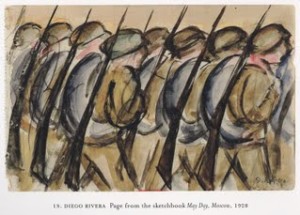
|
| Focus / Emphasis | The focus or emphasis is the object or element which first catches our attention.
|
| Unity / Harmony | Unity or harmony is the visually satisfying effect of combining similar, related elements. |
| Scale / Proportion | Scale is the overall size of something. Proportion is the relative size of objects within a work. For example, a caricature exaggerates the proportion of one or more facial features.
|
| Contrast | Contrast is the relative difference between elements. Bright vs Dark. Heavy vs Light, Rough vs Soft, etc. The greater the difference between light and dark areas, the more attention the area attracts. |
| Movement / Hierarchy | Movement is the visual path our eye follows. Hierarchy is a manipulation of elements to create movement through a work. |
